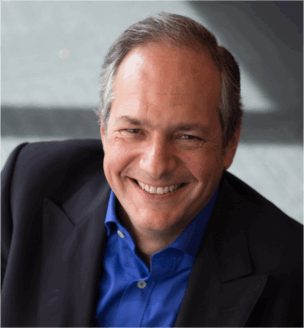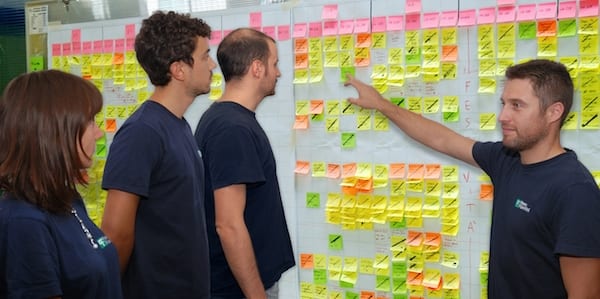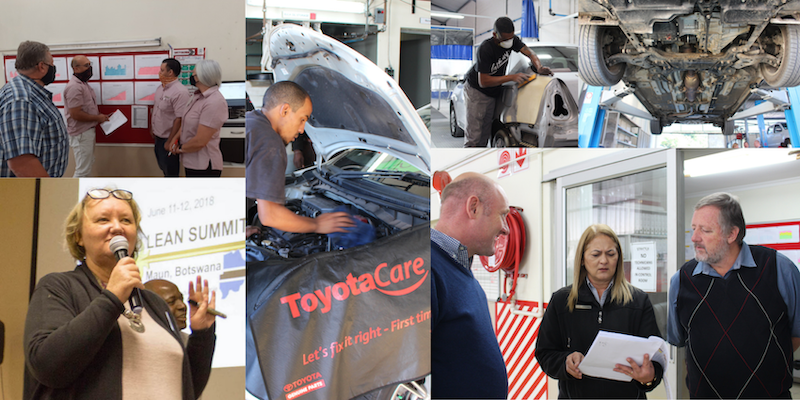
Troublesome problems and threshold concepts
FEATURE – Looking back on the lean journeys he's seen firsthand, the author concludes that a true lean transformation occurs when you establish lines of mentoring to the Thinking People System.
Words: Michael Ballé, lean author, executive coach and co-founder of Institut Lean France.
A year into the COVID pandemic, Toyota announced unexpectedly good results, surprising analysts once again when it claimed that its output would not be significantly disrupted by the chip shortage that is crippling its competitors. The company has been stockpiling the chips that go into everything in modern cars, from safety to entertainment and maintenance systems.
Pundits, as usual, have jumped on the news to claim that Toyota is abandoning its sacrosanct principle of Just-in-Time and “zero stock” policy, as they have argued every time the auto industry faces a supply chain breakdown. Few have bothered to investigate Just-in-Time enough to realize it was always meant as a coordination mechanism, conceived by Kiichiro Toyoda to get sites, equipment and people to cooperate better.
As Eiji Toyoda, who was instructed by Kiichiro at that time, explained: “What Kiichiro had in mind was to produce the needed quantity of the required parts each day. To make this a reality, every single step of the operation, like it or not, had to be converted over to his flow production system. Kiichiro referred to this as the 'just-in-time' concept. By this he meant: 'Just make what is needed in time, but don't make too much.’”
Since the catastrophes of 2011 (earthquake, tsunami and Fukushima meltdown), Toyota has been steadfastly working with its many tiers of suppliers to ensure better coordination across its value network – not just first tier supply chain. The company built stronger relationships and allowed for wiser decision making because of Just-in-Time, not in spite of it.
In many ways, however, the focus on Just-in-Time uncovers a deeper misunderstanding. Lean practitioners know that Just-in-Time is but one pillar of the Toyota Production System, together with customer satisfaction, Jidoka (the lesser known “never pass on a defect” pillar), employee satisfaction (through workload leveling, training to standards and involvement in kaizen) and then the wider foundation of basic stability and mutual trust. It is all too easy to see this “system” as a method to better organize production – but this would mean largely missing the point.

The Toyota Production System has also been described by executives as the ‘Thinking People System.” The aim is not to apply TPS, but to teach it. The system is not a method to organize production, but to think about how you produce – regardless of what you do and where you’re at. To go back to JIT, every operation works at a given level of “just in time”: the lead-time between order and delivery. The question asked by TPS is: how can we shorten this lead-time? First, how do you reduce the variation in delivery lead-times by solving immediate problems? Then how do you reduce the lead-times themselves as you understand the deeper issues?
Try it for yourself. Look at your own work, whatever it may be, and ask yourself:
- Could I better satisfy my customers? Better understand what they want, the performance and style they’re looking for, and deliver greater safety, quality, lead-time, cost and environmental friendliness.
- Could I reduce my lead-time? What is my takt time? Is there a way to move closer to continuous flow? Do I pull deliverables according to a customer calendar of events or push it by scheduling work in any way convenient (to me)?
- Can I better guarantee quality? Do I spot defects right where they are created or further down in the process? Are people and machines equipped with ways to flag issues and stop production rather than making defectives? Do I separate human work from machine work?
- Could I engage my employees more in their work satisfaction? How well do I handle workload ups and downs and employment conditions? How much do I invest in training all people to standards every day? How persistently (and patiently) do I try to engage people in self-directed small-step improvements of their own work processes?
- Is there a way to create trust through better working conditions? Is every team taught 5S and encouraged to take ownership of their workplace? Is every person trained to thoughtful problem solving? How good is my maintenance program? Do my systems enable people or hinder them in their work?
The crucial point is that TPS is not a system you can implement. If you seek actual transformation and the results that go with it, you need to mentor people in learning it as a whole – so that they mentor others in turn. Results come from each person applying TPS to their own work and coming up with new answers to the usual problems they face. To do so, they need to be taught and they need to teach themselves.
The system links the purpose of the enterprise – benefiting customers and society – and its unmovable center – people’s confidence in themselves, their tools and their managers. It creates “line of sight” – to put it in Tracey Richardson’s terms – so that all activities can always be related to customer value. Any group trained to this way of thinking can confidently – and serenely – tackle any challenge, from COVID-related supply chain breakdowns to large-scale climate change-related issues. The system teaches you to realize that any unsolvable problem can be attacked through local countermeasures and by bringing together positive energies to invent, copy and improve – and form overall adaptive responses.
None of the five questions above have easy answers, but each of them can be asked any day, anywhere. In learning theory, they are troublesome problems – problems that will always be there – which lead the way to threshold concepts, “aha!” moments of understanding, with a before (none of this makes sense) and an after (how could I not understand this sooner?).
The fundamental insight of TPS is that to make products well (monozukuri), first you have to develop people (hitozukuri) and, conversely, in order to develop people you first have to teach them how to solve problems in order to make better products. This is a core learning dynamic.
As many lean practitioners have found at their expense, applying TPS to any work situation by redesigning the process to make it “leaner” simply doesn’t work. It fails every time. Consultants may show low-hanging fruit, but the effort will always backslide and return to its previous working conditions.
It was never meant to work this way. From the very start, Eiji Toyoda was looking for learning systems that would teach people how to think differently about what and how they were doing, starting with where they were. In his books, Taiichi Ohno discusses thinking about production, not the actual production techniques – whether through observing longer in the Ohno circle, asking why five times, learning to recognize when you’re wrong or, indeed, using Kanban cards to visualize the gap between real customer demand and batch production.
Lean is the only management method that looks at how people think rather than try to control how people behave. It’s about orientation and support, not about command and control. The obvious assumption is that people do what they believe is right rather than what they’re told, and they usually have valid reasons to think what they think and know what they know. In this sense, cooperation requires more joint observation, deeper discussion, and better collaborative problem-solving.
As we tackle increasingly insurmountable problems, such as recovering from the pandemic and fighting climate change, we need a robust method that goes beyond this or that leader’s insights and bag of tricks. The Thinking People System provides exactly that. It has been elaborated by scores of dedicated engineers, tested and adapted in dozens of industries and thousands of companies.
To reap its benefit, however, we need to abandon once and for all the misconception that these are organizational techniques we can implement on others and wholeheartedly adopt the perspective of a system we learn and teach until the organization transforms itself, all people, all the time. Doing so means establishing lines of mentoring of TPS throughout the company, one person at a time.
THE AUTHOR

Read more


CASE STUDY – A unique approach to lean management and the involvement of CEO Mario Nardi helped Pietro Fiorentini, provider of solutions for natural gas distribution, become a model for lean companies in Italy.


FEATURE – Hansei is a powerful tool that helps us understand Lean Thinking and advance on our journey. The author shares the lessons he learned from the struggles Halfway Toyota encountered during its years-long transformation.


COLUMN - What does lean do for people in your organization? This column explores how their way of thinking changes as a culture of continuous improvement and problem solving takes root.


FEATURE – We spend a lot of time talking about innovation, but what is the actual impact of leveraging lean to achieve it? As the author points out, the potential is huge, provided certain conditions are met.

